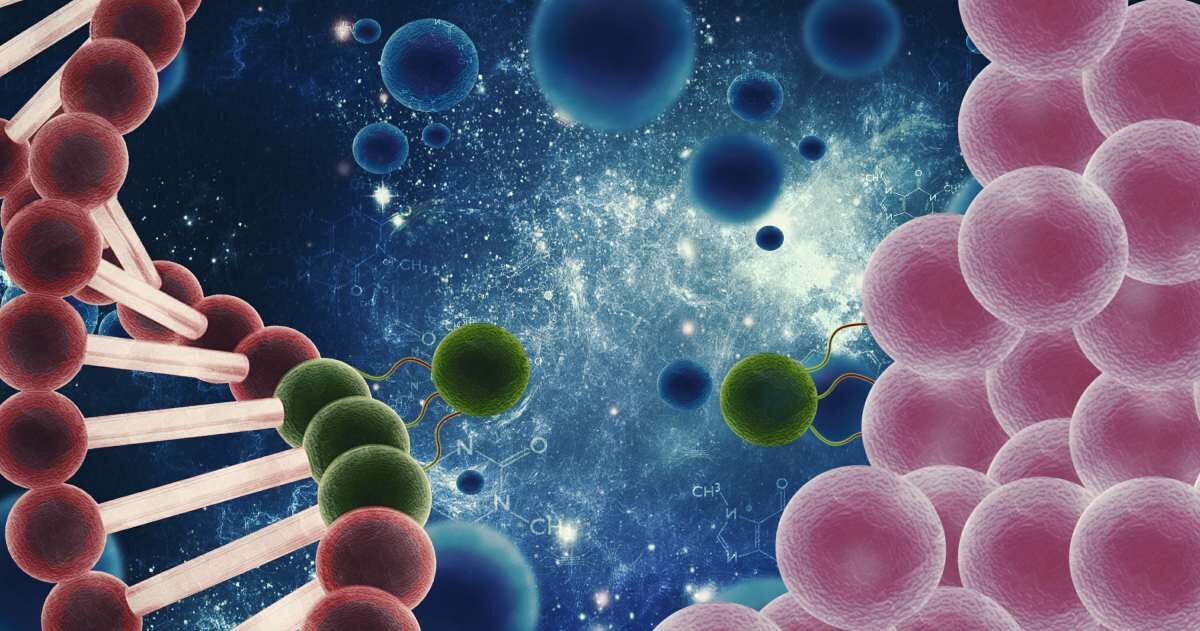På det tidspunkt troede de vigtigste talsmænd på kimteorien, herunder franskmanden Louis Pasteur og tyskeren Robert Koch, der hævdede, at alle bakterier i levende organismer, indbefattet mennesker, var angribere udefra. Med andre ord, fra vores hud indad var vi sterile, undtagen hvis vi var blevet invaderet af et patogen. I dag, 150 år senere, virker denne idé latterligt forkert og naiv.
Næsten alle ved nu, at billioner af bakterier lever i og på alle overflader af vores kroppe. Nogle mennesker har endda forsøgt at demonstrere, at det meste af vores genetiske materiale er bakterielt snarere end menneskeligt. Vi har nu afgørende bevis for, at disse billioner af bakterier, der lever i os, hjælper med at fordøje vores mad, syntetisere vigtige næringsstoffer, deltage i afgiftningsfunktioner, hjælpe med at regulere og kontrollere vores følelser og på nogle måder deltage i enhver normal menneskelig funktion. De tidlige fortalere for kimteorien var ikke alene fuldstændigt unøjagtige i deres konklusioner om bakteriens rolle i den menneskelige organisme, men vigtigere, de etablerede en ramme, der postulerede, at mennesker på en eller anden måde var adskilt fra naturen. Denne snigende og uvidenskabelige konklusion, der fortsætter til i dag, har forårsaget alvorlig skade på alle levende systemer.
I tilfælde af vira er et lignende skift lige begyndt at ske i det videnskabelige samfund. Det gamle paradigme om vira er, at vi i det væsentlige er 'virusfrie' i vores sunde, naturlige tilstand, og de eneste vira, der er inde i os, skal være patogener, der kommer udefra. Denne tro blev naturligvis aldrig bevist; det blev netop angivet som dogme, og det klæbte pænt sammen med fortællingen om 'naturen er ude for at få os.'
Kommentar: Delvist oversat af Sott.net fra New study says 'exosomes' can't be distinguished from viruses
If we fast forward to modern virology, we now know that these particles called viruses can be exosomes, also called extracellular vesicles (EVs), which are generated from the tissues as a way of detoxification and communication. The way it works is that when a tissue is exposed to a certain toxin, especially one that breaks down the genetic material (i.e., EMF poisoning), the tissue packages this broken-down genetic material into vesicles so they can be excreted from the body. This is what I mean when I say a virus is the body's way of "pooping out poisons."
This excreted package of poisons is not only a vital detoxification strategy, but it also serves as a communication vehicle that can be sent out to the world. Through a kind of resonance, exosomes communicate from one part of the body to another, or from one organism to its community of friends, that a poison has been encountered, so prepare to make a defensive response. The conclusion, then, is that these internally generated exosomes (EVs) are the agent of adaption for living beings. They are not pathogens. Unfortunately, the medical/scientific community has mistaken these detoxification-communication messengers for pathogenic viruses. But that narrative is starting to crumble. Consider this quote from a recent paper published in the journal Viruses 2020 May; 12(5). 571. The paper was written by Gianessi, F et al and is titled: "The Role of Extracellular Vesicles as Allies of HIV, HCV and SARS Viruses." Here is a quote from Section 3 of the paper:
The remarkable resemblance between EVs and viruses has caused quite a few problems in the studies on the analysis of EVs released during viral infections. Nowadays, it is an almost impossible mission to separate EVs and viruses by means of canonical vesicle isolation methods, such as differential ultracentrifugation, because they are frequently co-pelleted due to their similar dimension. To overcome this problem, different studies have proposed the separation of EVs from virus particles by exploiting their different migration velocity in a density gradient or using the presence of specific markers that distinguish viruses from EVs. However, to date, a reliable method that can actually guarantee a complete separation does not exist.Read the final line again: A way to distinguish external "pathogenic" viruses from particles generated from our own tissues to help us adapt to a novel toxin does NOT exist, period. Perhaps the reason virologists can't find any method to distinguish these particles from each other, in spite of the fact that they can pull a single molecule out of virtually any complex solution, can only be because there is nothing to distinguish. I submit that all viruses are exosomes/EVs. They are all generated from our tissues. None are pathogens. See you later, close up shop, it's time to get honest work.
This change in how we view viruses (exosomes) will happen, but possibly only when the old guard dies out. Paradigms are hard to change. This one, however, is threatening to destroy the world, and we don't have time for the virologists to fade away. We must understand this shift ourselves. It's not that complicated once you remove the veil. It's obvious: We humans are part of the joyous dance of life, viruses and bacteria are our dance partners, and without them we will trip on our own two feet and fall flat on our collective faces.
All the best,
Tom




Læserkommentarer
dig vores Nyhedsbrev